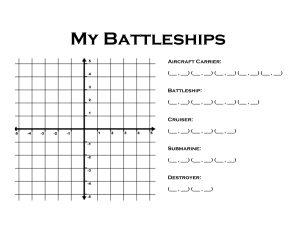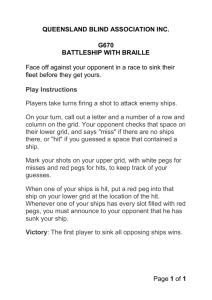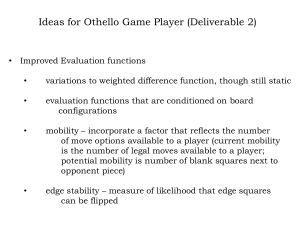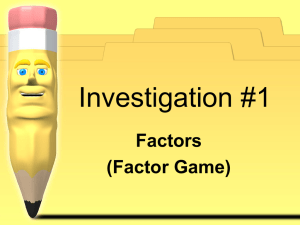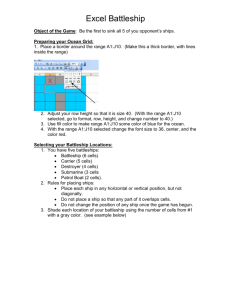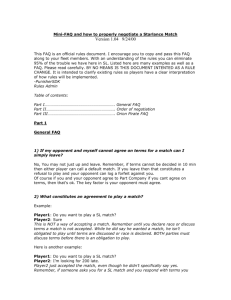Electron Configuration Battleship
advertisement
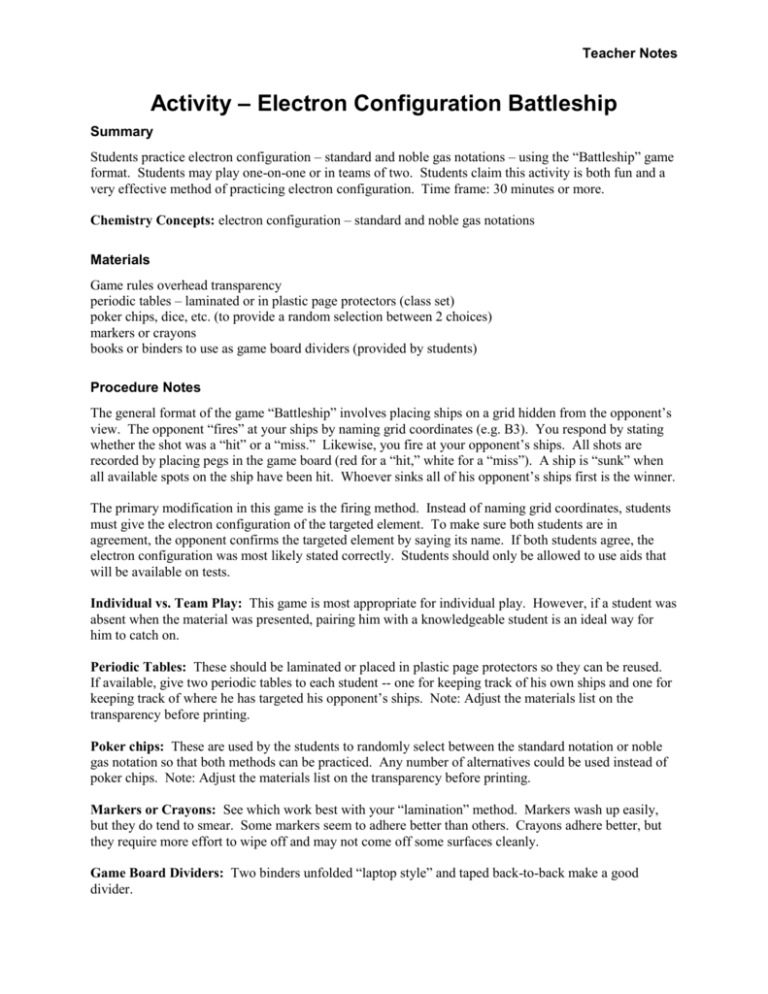
Teacher Notes Activity – Electron Configuration Battleship Summary Students practice electron configuration – standard and noble gas notations – using the “Battleship” game format. Students may play one-on-one or in teams of two. Students claim this activity is both fun and a very effective method of practicing electron configuration. Time frame: 30 minutes or more. Chemistry Concepts: electron configuration – standard and noble gas notations Materials Game rules overhead transparency periodic tables – laminated or in plastic page protectors (class set) poker chips, dice, etc. (to provide a random selection between 2 choices) markers or crayons books or binders to use as game board dividers (provided by students) Procedure Notes The general format of the game “Battleship” involves placing ships on a grid hidden from the opponent’s view. The opponent “fires” at your ships by naming grid coordinates (e.g. B3). You respond by stating whether the shot was a “hit” or a “miss.” Likewise, you fire at your opponent’s ships. All shots are recorded by placing pegs in the game board (red for a “hit,” white for a “miss”). A ship is “sunk” when all available spots on the ship have been hit. Whoever sinks all of his opponent’s ships first is the winner. The primary modification in this game is the firing method. Instead of naming grid coordinates, students must give the electron configuration of the targeted element. To make sure both students are in agreement, the opponent confirms the targeted element by saying its name. If both students agree, the electron configuration was most likely stated correctly. Students should only be allowed to use aids that will be available on tests. Individual vs. Team Play: This game is most appropriate for individual play. However, if a student was absent when the material was presented, pairing him with a knowledgeable student is an ideal way for him to catch on. Periodic Tables: These should be laminated or placed in plastic page protectors so they can be reused. If available, give two periodic tables to each student -- one for keeping track of his own ships and one for keeping track of where he has targeted his opponent’s ships. Note: Adjust the materials list on the transparency before printing. Poker chips: These are used by the students to randomly select between the standard notation or noble gas notation so that both methods can be practiced. Any number of alternatives could be used instead of poker chips. Note: Adjust the materials list on the transparency before printing. Markers or Crayons: See which work best with your “lamination” method. Markers wash up easily, but they do tend to smear. Some markers seem to adhere better than others. Crayons adhere better, but they require more effort to wipe off and may not come off some surfaces cleanly. Game Board Dividers: Two binders unfolded “laptop style” and taped back-to-back make a good divider. Electron Configuration Battleship Materials (per group of two) 2 laminated periodic tables 2 different colored markers 1 cup containing red and blue chips 1 game board divider (binder, book, etc.) Game Rules 1. Each player uses a marker to draw one ship per sublevel. Each ship should be arranged vertically or horizontally and should occupy the specified number of boxes. s-sublevel – Destroyer – p-sublevel – Cruiser – d-sublevel – Battleship – 2. Player #1 draws a chip and “fires” at an element by giving the appropriate electron configuration. red chip – standard notation blue chip – noble gas notation 3. Player #2 confirms the targeted element by saying its name and declares it a “hit” or “miss.” 4. Player #1 records the “hit” with an “X” or “miss” with an “O” using a different color marker. 5. Players trade roles. 6. The player who sinks all of his or her opponent’s ships first is the winner!
